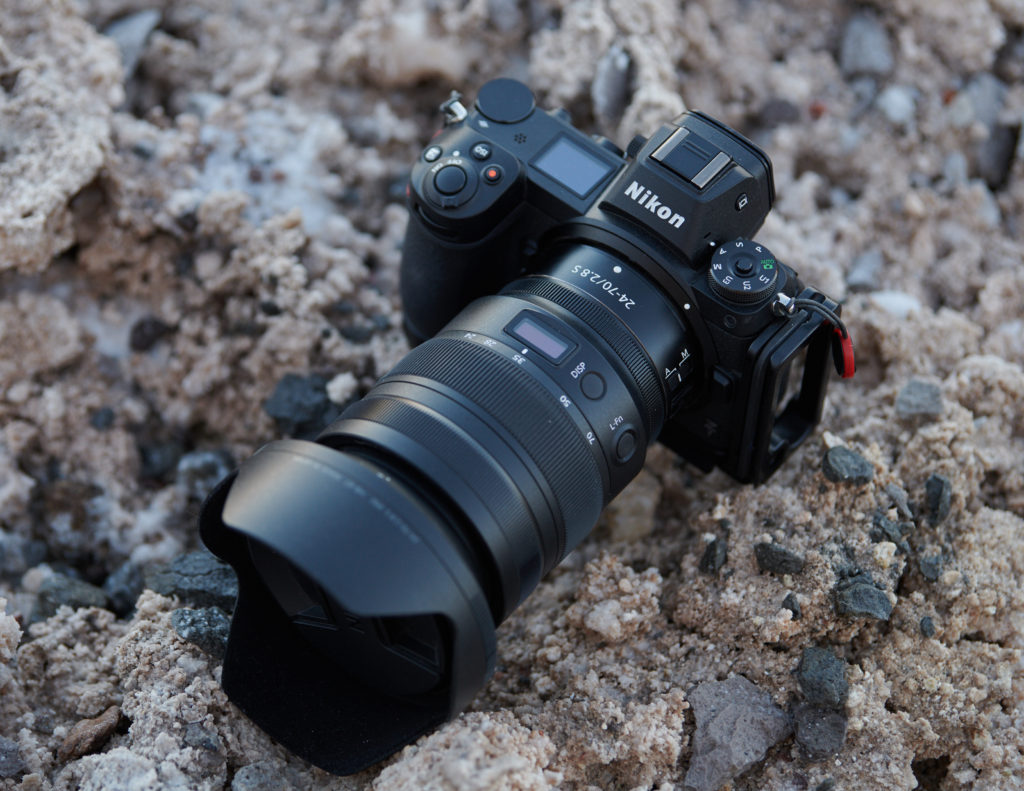
Readers of this blog may have noticed that I followed the crowd and went mirrorless last November. Not in the sense of jumping ship to Sony (as seemingly all bloggers and youtubers these days), but adding the Z7 to the Nikon DSLR kit.
I was recently asked: what if I could keep, or better, carry only one? I am afraid that there is no simple answer, though I would be inclined toward the Z7 since I added the fabulous Nikon 24-70 f/2.8 S lens. Still, I refrained from the clickbait title “The End of the DSLR” for a good reason.
For the records: I am not sponsored by anyone nor did I receive any discount on the material, which I purchased from my own funds. The Z7 and the Z-mount lenses were from the first batches shipped to Switzerland. I used the Z7 with the 24-70 f/4 kit zoom extensively during a trip to Havana and the Z7, 24-70 f/2.8 S combo on the Bolivian Altiplano, not to mention trips to the French alps and numerous product shots. This is a decent amount of time and sufficiently large number of images to be familiar with the system’s advantages and shortcomings.
As I don’t have to convince myself of the purchase, I’m not posting test-shots but medium-sized sample images instead. The images were shot on the Z7 and processed in Capture One Pro 12. They were then saved and posted at 50% of their native size. Dedicated lens profiles for the Z lenses became available only with Capture One 21.1.1.7, so I used only the default sharpening and no software correction for chromatic aberrations, distortion, vignetting, and sharpness fall-off.
For those who don’t want to read the rest: I will keep the kit zoom 24-70 f/4 S for mountaineering or when I want to travel light. I sold the AF-S 24-70 f/2.8 G for the F-mount, although this lens could be used on the Z7 with the adapter, while the converse is not true: the Z lenses designed for the short flange-focal length cannot be mounted on the DSLR. Consequently, the question will arise what to pack to remain N+1 redundant. Also my Olympus OM-D MK II is begone, because there was too much overlap with the Z7.
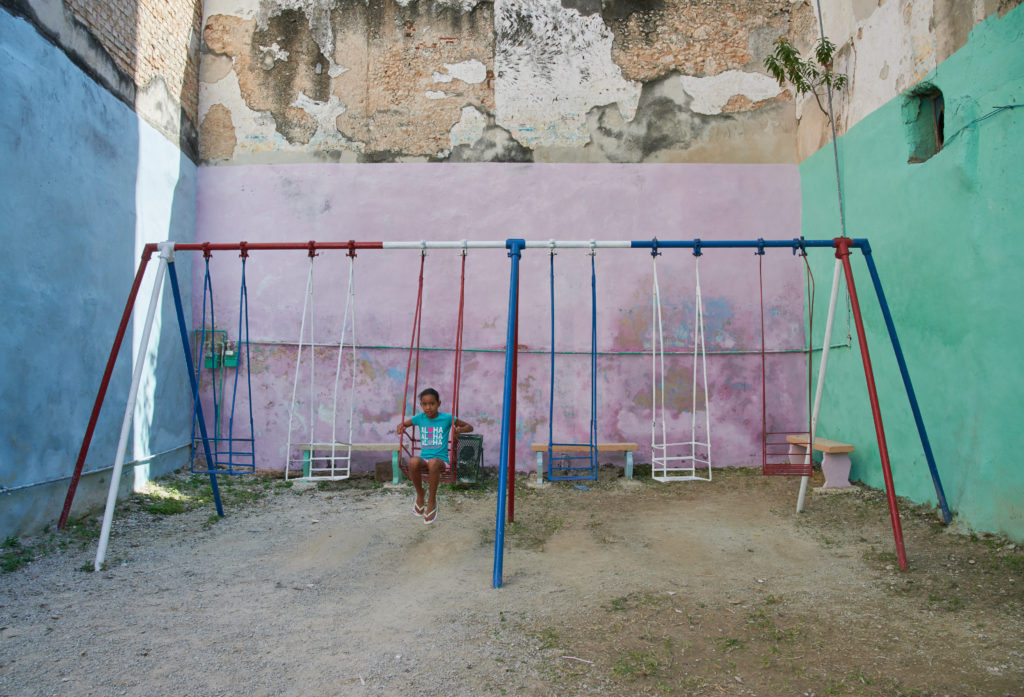
Havana 1: Nikon Z7, 24-70 f/4 S @ 25 mm, ISO 400, f/8, 1/100 s. Capture One 12, 50%. Handheld. Notice the lens misalignment resulting in the blurry edge (bottom left). Click to enlarge.
With an excellent lens in the most versatile zoom range (the 24-70 f/2.8 S added in April), I have more often grabbed the Z7 than the D850. Fortunately, the two cameras operate with the same batteries and XQD cards. Talking of which, these cards are expensive and require a $ 60 card reader (from Sony), but the writing and read-out speeds put a smile on your face: you basically never experience any buffer clearing, and downloading is a good 2-3 times faster*. The Z7 has only one card slot, which is an issue for my upcoming Nepal trekking. But as I often travel with a laptop anyways, and shoot RAW exclusively, the second (slower SD) card slot isn’t all that important. Moreover, using the USB-C port on the Z7 one can now use a laptop (and an iPad Pro 2018) for charging and file transfer without schlepping the charger and the card reader.
The Z7 has provided me with a larger shooting envelope and thus a way to progress creatively; due to IBIS, the in-camera sensor stabilization, there is a chance** to get critically sharp images at 1/20th of a second and 70-mm focal length (FL). The 800 series of DSLRs requires at least 1/(3 FL), although there is some margin with the D850 due to its better implementation of the electronic first curtain (EFC) in the live-view mode***. So we have an advantage of 3-4 stops with respect to the D850 for all nonstabilized lenses. It’s not the advertised 5+something stops but a considerable improvement indeed.
With the EFC enabled, the exposure is not initiated by a quick closing/opening cycle of the mechanical shutter, but by an electronic reset of the sensor. This avoids motion blur due to shutter shock. However, because of the line-by-line reset of the sensor, the EFC is limited to 1/2000th of a second or longer. Flash can be used, at least up to the maximum sync speed of 1/200th of a second, but there is no high-speed sync with the speed lights. On the Z7 and the D850, there is also what Nikon calls a silent-shooting mode, which is a fully electronic shutter replacing both the first and second mechanical shutter blades. This mode operates up to 1/8000th of a second. However, flash cannot be used and this mode has undesirable side effects, such as rolling shutter artefacts for fast moving subjects and banding due to flickering light.
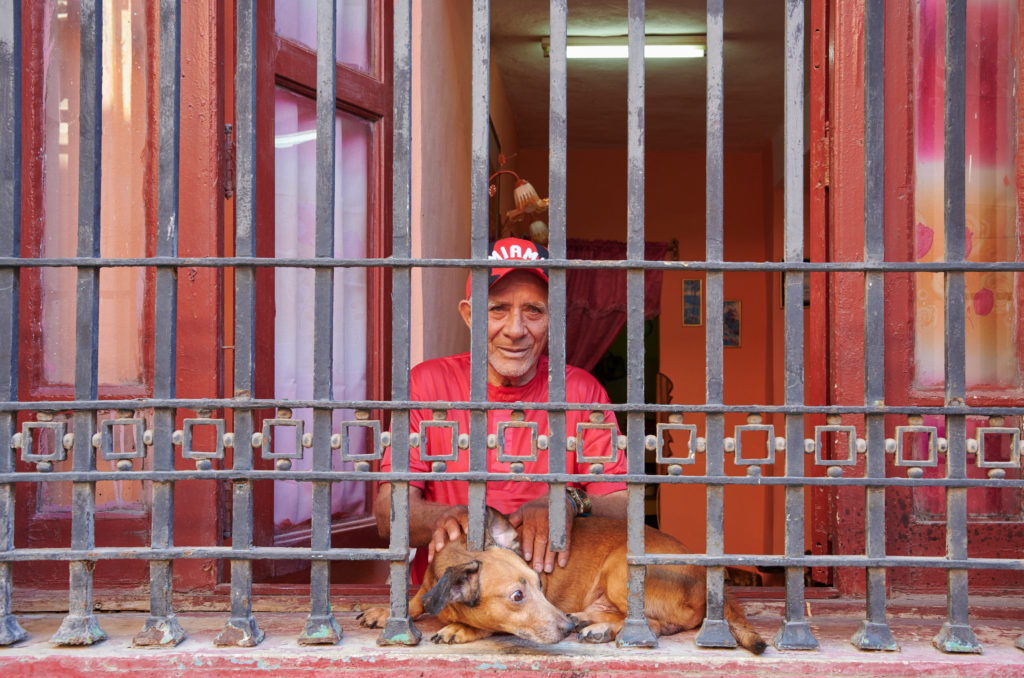
Havana 2: Nikon Z7, 24-70 f/4 S @ 46 mm, ISO 400, f/8, 1/20 s. Capture One 12, 50%. Handheld. Click to enlarge.
The combination of IBIS and the EFC has allowed me to more often leave the tripod at home or in the pack. That’s a big deal: With the D800 and D810 I shot perhaps 90% of the images from a tripod, using the three-second shutter delay option, for it wasn’t possible to make best use of the 36 Megapixels otherwise. With the Z7 this has changed; I only use the tripod for low-light shooting, stitch imaging, and focus stacking, which accounts for less than about 40% of all images. Is is often said that image stabilization must be turned off when shooting from a tripod. I have not encountered any decremental effect when using the shutter delay option. So leaving it enabled is a better option than forgetting to switch it back on.
As I have reported here, the continuous autofocus and focus tracking of the Z7 sucks, although the focus sensors extend over nearly the entire image area, which is an improvement for focusing on the near subject as a start for focus stacking. Despite a significant firmware update adding eye-AF, the Z7 still cannot come close to the D850. From hands-on experience, the Fuji GFX 50 (and GFX 100) are even worse (mostly because the lenses are slower), my wife’s Sony RX10 IV is horrible, and the Olympus OM-D MK II is only slightly better.
Being a back-button focuser, I configured the D850 for continuous autofocus. Keeping the button pressed, autofocus is continuous (for action and portrait to compensate for even the slightest movement of the photographer or the subject), letting it go after focus is acquired mimics selective autofocus (for focus and recompose, and tripod work) and not pressing the button allows for instant manual focusing or manual correction. On the Z7 I still enabled buck-button focusing but with the camera configured for selective autofocus. On continuous, there is noticeable (micro) hunting due to the feedback loop from the lens motor controller. One may argue that sharpness is an overrated concept, and that the most iconic images, for example Nick Ut’s Terror of War and Alberto Korda’s Che, are not all that sharp. But for landscape, architecture, and portraits I want to be sure about the position of the focal plane.
Considering the announcement of a Nikon D6 and a 120-300 f/2.8 lens for the next summer Olympics makes it clear that Nikon doesn’t believe that the performance gap on focus tracking can be closed too soon. I strongly recommend to treat the information from fanboys and influencers with a grain of salt and check out the autofocus performance of the mirrorless options for yourself, in particular, if your subjects contain sports and erratically moving children.
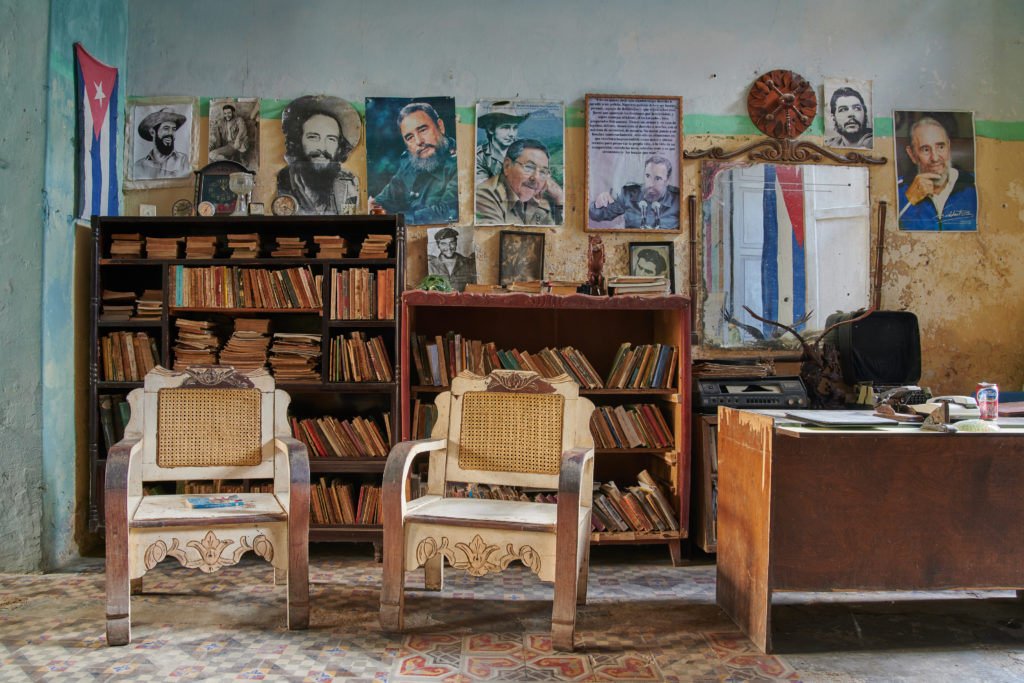
Havana 3: Nikon Z7, 24-70 f/4 S @ 26.4 mm, ISO 100, f/8, 0.7 s. Capture One 12, 50%. Tripod. Notice the strong barrel distortion, albeit easily corrected applying the lens profile. Click to enlarge.
Thus, the D850 is still a more complete camera than the Z7, although the Z7 user interface is more advanced: for example, it has configurable, touch sensitive fields activated by the “i”-button. You can change a number of settings on the fly quickly and easily. As with the D850, there is no need to define shooting banks (except, perhaps for assigning different flash-sync modes). And that’s why I can’t get too excited about the custom U1-2-3 settings on the Z7 and would have preferred a more similar button layout to the D850.
As with the D850, the joy-stick on the Z7 can be configured for back-button focusing, so you don’t need to toggle between the muti-function and the AF-On buttons as it used to be on the D800 and D810. On the Z7 it is easy to deactivate nose focusing, that is, the undesirable feature of accidental focus-point displacement with your nose touching the touch-sensitive display, setting the option “Touch shutter/AF: Off”. Moreover, all the menus can be addressed with the multi-function button which also works with cloves. Addressing the settings in the “i” menu using the display requires every change to be confirmed with the “ok” icon. But when you do the same with the multifunction button, no confirmation is required. This and the differences in the “i”, “disp”, and “info” buttons between the Z7 and the D850 are significant enough to be annoying.
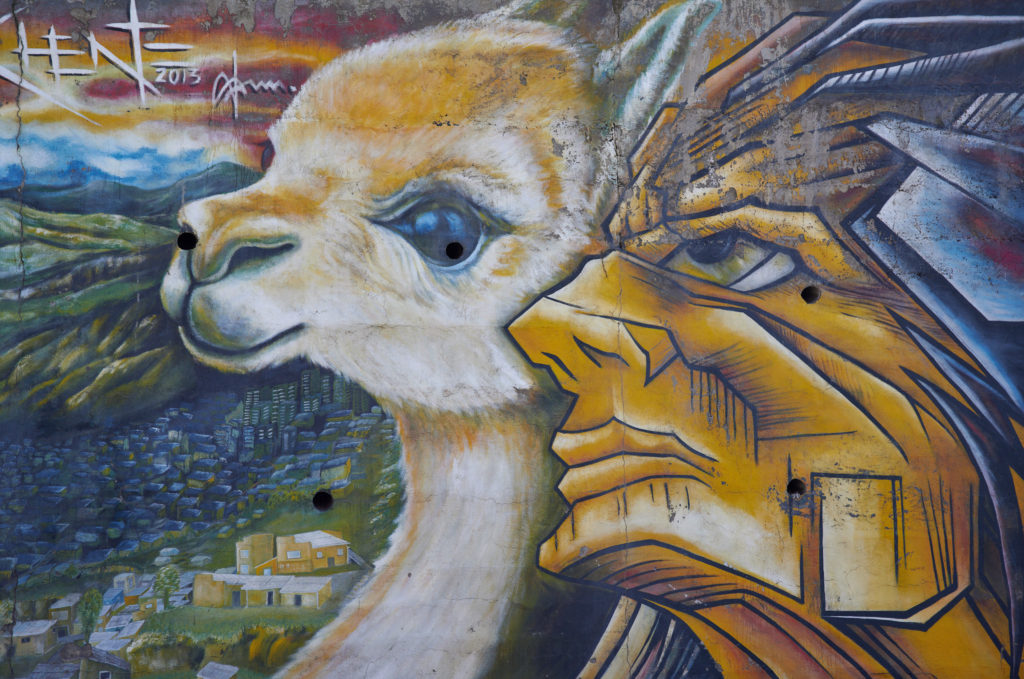
Bolivia 1: Nikon Z7, 24-70 f/2.8 S @ 62 mm, ISO 200, f/6.7, 1/200 s. Capture One 12, 50%. Handheld. Click to enlarge.
I couldn’t find any difference in the image quality between the D850 and the Z7, and no, I cannot reproduce any of the purported PDAF banding (allegedly due to the phase detection autofocus circuitry on the sensor) in the heavily pushed, dark shadows. And why should you push the shadows by more than five stops instead of properly exposing your image to start with?
Which brings us to the pros and cons of the electronic view finder (EVF). You can blend in information, such as the histogram and the bubble lever, and there is a white-balance and exposure preview (sort of). And focus peaking, which makes using the tilt/shift lenses so much easier. For my age it is also convenient that I can peak and chimp through the EVF that is equipped with a diopter (I am short-sighted but need reading glasses for inspecting the image on the display). However, the eye detection, that is, the automatic switch between the display and EVF has failed in some situations, for example, shooting a bright scene from a dark area. Dust doesn’t help either.
The EVF, although one of the best on the market, often gives the impression of blocked shadows and burnt highlights because of its limited dynamic range. Therefore, you may be tempted not to take the shot, although there will be far more latitude in the RAW files. With the optical view finder, it’s the other way around. You may be happily shooting along, although your settings are wrong, or the contrast exceeds the dynamic range of the sensor. These differences just require some getting used to.
The D850 has a depth-of-field (DOF) button shutting down the lens and darkening the optical viewfinder, while normal viewing remains at open aperture. There is also live-view DOF previewing with the lens physically stopping down. The Z7 is different. The attached lens automatically stops down to the selected aperture, but only between f/2.8 and f/5.6, as can be easily verified by looking at the entrance pupil of the lens. While for these apertures the viewfinder is “what you see is what you get”, this is no more the case at aperture f/8 or f/11 and close-focus distance. Moreover, this requires to check lens focus shift at smaller apertures than f/5.6, which is not a problem when focusing with live view on the DSLR.
An advantage of the optical viewfinder is that it doesn’t impact night vision. After adapting my eyes, I was able to compose for the Milky Way, while this wasn’t possible with the EVF. Using the Z7 required an iterative composing process including guesstimated camera movements. However, the on-sensor phase detection pixels on the Z7 sensor enabled its auto-focus system to focus on a bright star, while the D850 failed in this respect; it required to use live view, zoomed to 100%, combined with manual focusing.
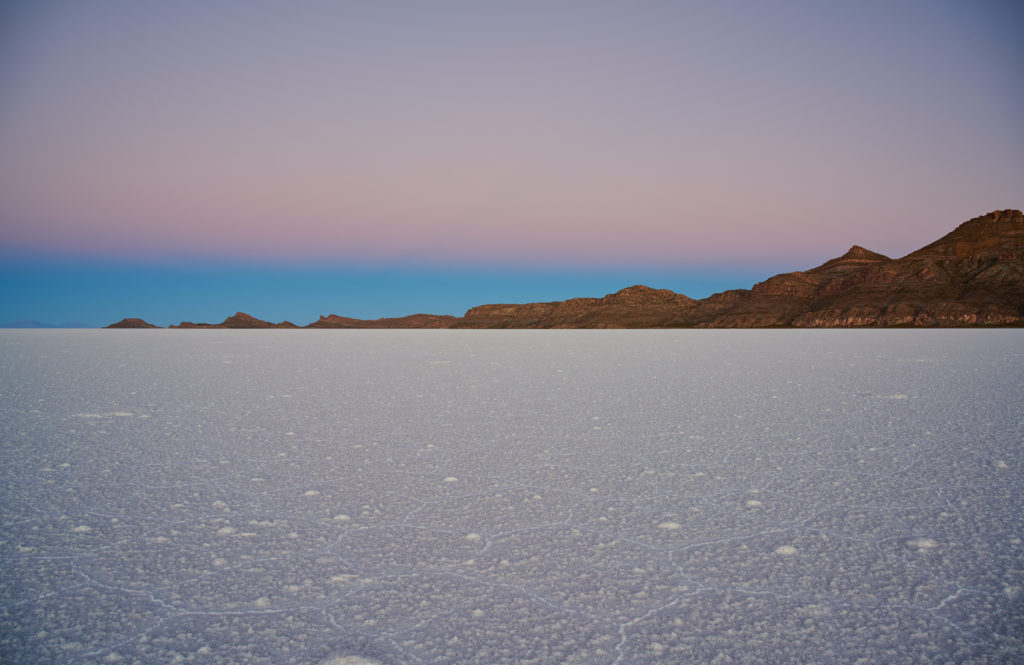
Bolivia 2: Nikon Z7, 24-70 f/2.8 S @ 24 mm, ISO 64, f/8, 0.5 s. Capture One 12, 50%. Tripod. Click to enlarge. Notice vignetting even at f/8.
Moreover, the optical view finder doesn’t drain batteries, but kudos to Nikon for a clever energy management on the Z7. You can choose to deactivate the display entirely and activate the EVF only at eye contact, which helps even more. In that respect the Z7 performs better than the D850 for extended use of live-view (and forgetting to switch it off). The CIPA battery test results are misleading. The Z7 can do much better than 400 shots. But on a DSLR you can refrain from chimping all-together, which brings you into a different ballpark. I had once the need to survive without battery charging for ten days. With only one spare battery, this would be a tough call on any mirrorless camera.
A last comment before we discuss lenses: I’m still not decided what to think about the exposed sensor when changing lenses. On the recent trip to the Altiplano of Bolivia I had the 24-70 mounted on the Z7 and the 70-200 on the D850, and in this way avoided changing lenses on the Z7 all together. Because of the shorter and larger flange, the sensor should be easier to clean, but I am scared wiping the sensor mounted on the IBIS actuator, which is supposedly locked when the camera is turned off. The handbook says nothing about this, except that you should have your sensor cleaned at an authorized dealer.
I like zoom lenses, of which the mid-range 24-70 or 24-120 lenses are the most versatile. Unfortunately, they are also the most complicated to design and therefore have left something to be desired. The 24-70mm f/2.8 G for the F-mount is worse than the 14-24 and 70-200 f/2.8 zooms at their respective focal lengths, and considerably less sharp than the cheap f/1.8 primes, if only you found good samples without decentring.
For those telling me to shoot primes: I did it for 25 years on a view camera and I have lived with the limitations. It is not so good to end up on the middle of the road (zooming with your feet) or to change lenses in hostile environments.
There is of course an ugly marketing trick. Even though we now have fantastic sensors in all modern cameras, we are persuaded to buy monstrous f/1.4 lenses, while f/1.8 primes and f/4 zooms are marketed as amateur kit lenses. The 24-70 f/4 S would be a fine, non-obtrusive lens if only they had spent an extra $ 100-200 on a tighter quality control or a few more metal shims for improving lens alignment. This is an obolus that I definitely would be prepared to pay. My 24-70 f/4 S is decentered, which manifests itself in unsharp corners at the lower left and upper right. So far, I have noticed decentering on all the Nikon lenses “made in China” but never on the (pro?) lenses “made in Japan”****.
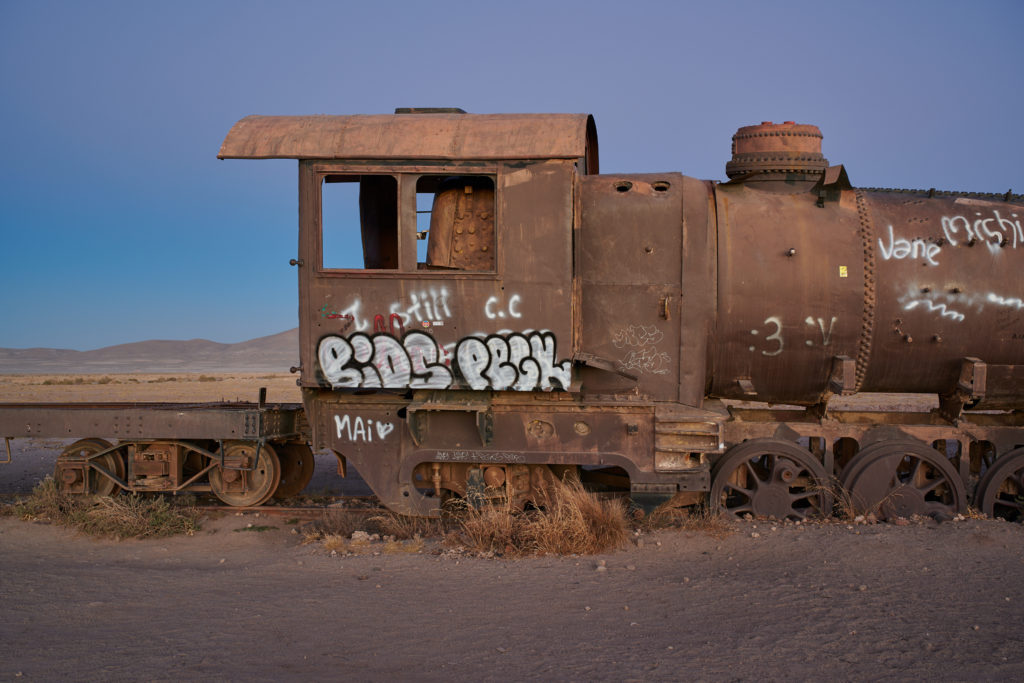
Bolivia 3: Nikon Z7, 24-70 f/2.8 S @ 35 mm, ISO 64, f/8, 1.5 s. Capture One 12, 50%. Tripod. Click to enlarge.
The Z 24-70 f/2.8 S is the first Z-mount lens from the holy trinity of f/2.8 zoom lenses, with the 70-200 f/2.8 and the 14-24 f/2.8 announced for next year. The haptic is in line with the other Z-mount lenses so far introduced. It’s the typical magnesium alloy / polycarbonate shell construction and feels a bit less solid than the lenses for the F-mount. On the other hand, plastics can absorb more energy, weighs less, and feels less cold in harsh environments. However, the thermal expansion coefficient of plastics is not lower than for metal: some example include aluminum, 21-24 micro-meter per meter Kelvin, optical glass 8, and polycarbonate 65-70 which comes down to 22 when it is glass-fiber reinforced. It’s thus all about matching thermal contractions of the used materials.
If you are not willing, or able, to disassemble your lens, cut it in half, or have it NMR scanned, it is impossible to judge on built quality. There are a lot of ways to hold lens elements in place, which include retaining rings and clamps, or bonding with elastomers and epoxy resins. From the outside, we have no clue what’s going on: clamps, shims, size of screws, weather sealing, and the ability to have the lens serviced if something goes wrong. The lens hood, however, is a bit flimsy for my taste and the pouch that comes with the lens is laughable. The display is a bit of a gimmick that I haven’t used much; but if you like setting the lens on hyper-focal distance, no pocket calculator is needed.
Moving from the D850 with the 24-70mm f/2.8 G to the Z7 with the 24-70mm f/2.8 S yields a noticeable smaller and lighter combo, which remains well balanced, particularly with an L-bracket fitted to the camera. It is less obtrusive also; on the two mentioned trips nobody asked me about the camera. This was not the case when I had the D850 around my neck.
Obviously also designed for video, the Z lenses show very little focus breathing, that is, the image size doesn’t change when the lens is refocused; an advantage not to be underestimated for focus stacks as well. The close-focus distance of the 24-70mm f/2.8 S is 0.37 m, which is not as short as for the 24-70 f/4.0 S but still better than for the 24-70 f/2.8 G. Surprisingly, the kit lens shows even less focus breathing than the pro f/2.8.
I tested the 24-70 f/2.8 S lens against the Nikon Z 24-70mm f/4.0 S, the 24-70mm f/2.8 G, 28 f/1.4 G, 14-24 f/2.8 G, 45 PC-E, and the 70-200 f/2.8 FL all mounted on the Nikon Z7 (via the adapter in case of the F-mount lenses). The 24-70 f/2.8 S is flawless in any field-relevant aspect, except for the large geometrical aberrations at 24 and 70 mm. The lens has significant barrel distortion at 24 mm, and badass pincushion distortion at the long end. The uncorrected distortions are not quite as bad as for the 24-70mm f/4 S, though. The vignetting is also very pronounced; about two stops at 24 mm and f/2.8.
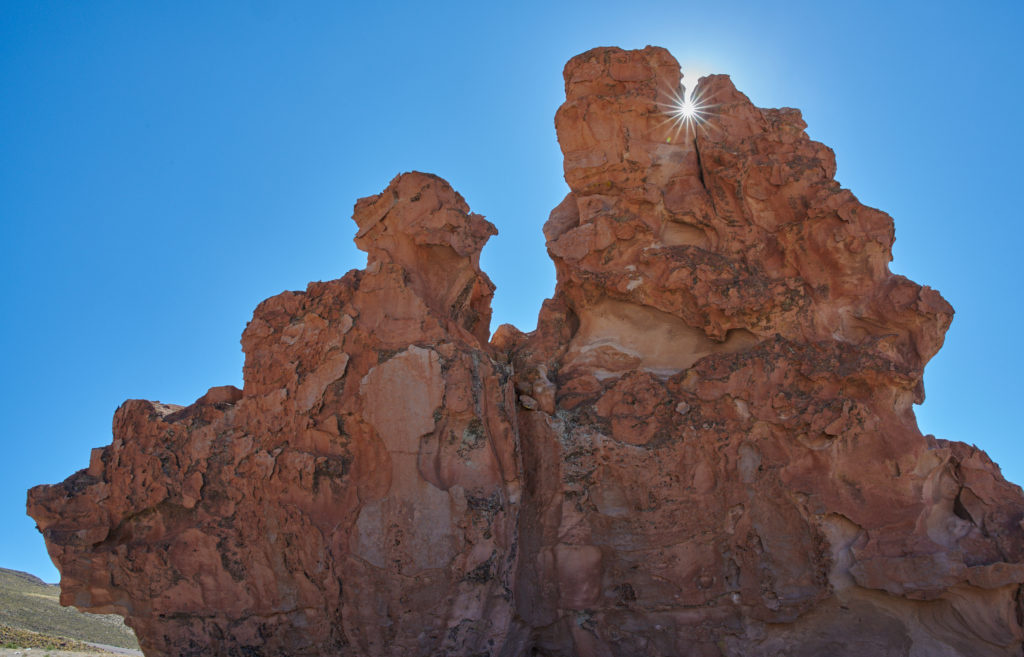
Bolivia 4: Nikon Z7, 24-70 f/2.8 S @ 24 mm, ISO 400, f/16, 1/145 s. Capture One 12, 50%. Handheld. Click to enlarge.
This is, by the way, a trend I have seen in all other mirrorless combos so far; not only is there a supposedly easier lens design because of the short flange-focal length, but also the possibility to rely on (in camera) distortion correction, a potentially sharpness-damaging optical shortcut. Software correction of barrel distortion can improve micro contrast in central areas, where the pixels are compressed, and degrade it in outer zones where pixels are stretched. For correcting pincushion distortion, it is the other way around. But if lens-designers lowered the distortions, something else would get worse and I prefer distortion and vignetting over field curvature (wavy sharpness across the frame), focus shift, chromatic aberrations, and size (weight). Besides, not all subjects require distortion correction and vignetting can even direct the viewer to the subject.
Sharpness (or better the resolving power) of the 24-70 f/2.8 S at all focal lengths is clearly better than for the 24-70mm f/2.8 G (for the F-mount) even after distortion correction. Moreover, it’s better than the 24-70 f/4 S across the frame and in the corners. All that is achieved with very little field curvature, which I found so disturbing in the 35 mm Sigma Art lens (sold). By f/5.6 we are in the ball-park of the best primes. This, for me, is the true level of sufficiency: image quality of primes and convenience of a zoom. I should add though, that I am not a bokeh diehard; except for portraits (that I shoot at 135 mm whenever space permits) I want my images sharp throughout and thus do not care about “onion-rings” in the out-of-focus areas.
The Z 24-70 f/2.8 S is only bested in the corners by the 28 f/1.4 at apertures below f/5.6 and in the center by the 70-200 f/2.8 FL, again only below f/5.6. But I consider these differences not field relevant. The new zoom is sharper than the 14-24 at 24 mm (at all apertures) and better than the 45 f/2.8 PC-E (tilt/shift) that I may put onto the market, even more so, as we now have a good (albeit not perfect*****) implementation of focus stacking (focus shift shooting in Nikon parlance) on both the D850 and Z7.
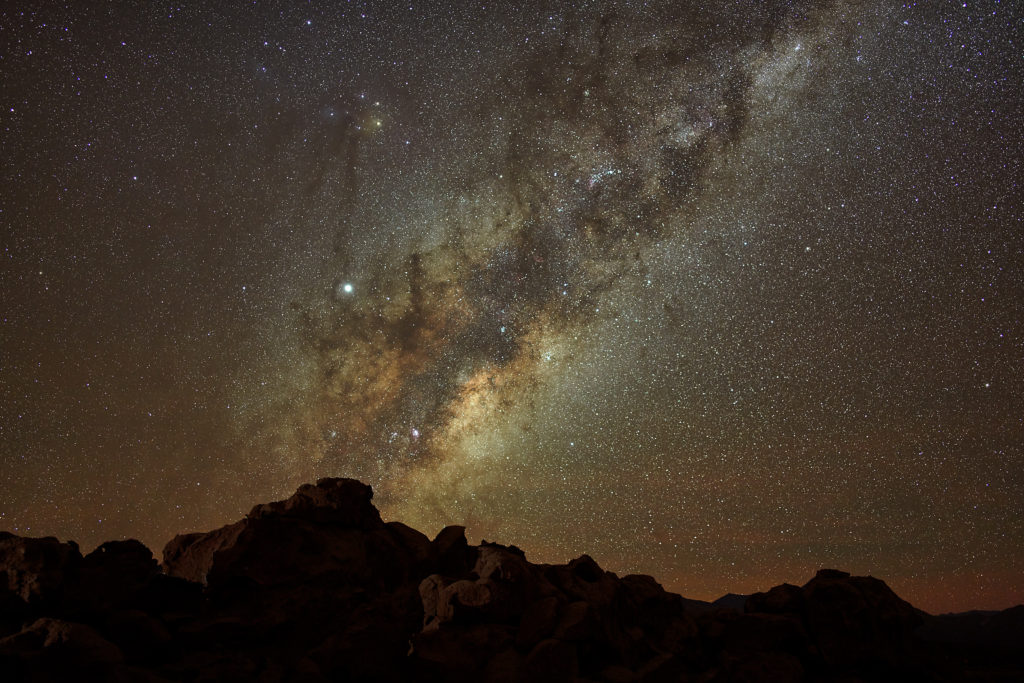
Bolivia 5: Nikon D850, 28 f/1.4 G at f/2, 30 s. Tripod, orbital mount. It is possible to frame such an image with the optical viewfinder of a DSLR. With the Z7 I did not succeed.
Ghosting and flare are also well controlled, you can of course produce some green/blue coloration by shooting right into the sun, but it is still less than what we have with the F-mount lenses. One could even argue that the lens is too contrasty and loses its “character” for wedding photographs where some lens flare might be appropriate.
I didn’t find any focus shift in the lenses. My copies of the pro zooms for the F-mount don’t have it either, but that would be a disaster on a DSLR where the focus system operates on the open aperture. But even in the mirrorless world, focus shift is a nuisance if you must focus wide open because of the low-light conditions or you shoot at smaller apertures than f/5.6.
Summing up, does the Z7 and its first pro lens in the Z-mount line-up merit a system change? Definitely not. Does it prevent me from swapping brands? You bet. Mirrorless, in combination with the larger flange and IBIS is the future, also because mirrorless cameras have less parts and are cheaper to produce. Let’s see how the two other zoom lenses from the holy trinity, in particular the 14-24 f/2.8, will perform.
However, for portrait, sports, and reportage, (no need for IBIS but for reliable focus tracking) I will keep my DSLR. There is no benefit of mirrorless in terms of resolution, low-light performance, and dynamic range. Moreover, the rumors have it that the D6 will have IBIS. If this is true, we will see it in any upgrade of the D850 as well.
A good time to pick up some rarely used F-mount lenses from those who have “said goodbye to their DSLR”.
SR
*The fastest XQD card is the Sony G with about 440/400 MB/s r/w. Nikon has announced that its upcoming firmware update for the Z7 and D850 Z6 will add support for CFexpress cards with 1700/1200 MB/s r/w. The fastest SDXC cards have 170/90 MB/s r/w.
**You must take more than one image in these settings. The keeper rate is 20-50% depending on your hand-holding technique.
*** On the D800 and D810, the EFC mode only worked in the Q and MuP (mirror up) mode. Thus, using live view and a hood lope, you had to use MuP and press the shutter twice to avoid the mirror flapping down and up again. When hand-holding the camera this felt awkward and somewhat defeated the idea of reducing vibrations.
**** And even Zeiss lenses are no exceptions as I have reported here.
***** You can’t chose the focal plane on the far end as well (as when tethering to a PC running HeliconFocus). Focusing on the foreground and estimating the number of steps required for the scene often results in too many images.
One Comment
Dear Stephan,
a very nice and consistent text regarding the Nikon Z7. I liked very much the pictures (Cuba and Bolivia), which are, technically and artistically very good, with appropriate comments. We do take different approaches on photography (maybe our interests are not exactly the same) but we have much in common.
For my type of photography, the drawbacks of mirrorless are not so relevant. I remember that in 2009, I was in Koeln and I tried, for the first time, a mirrorless body. It was the Panasonic G1 (the first one in that family) and I thought at once: ‘that is the future of photo cameras. No mirror mechanisms, no screen (and irritating dusts), silence, no focus-shift, ‘you get what you see” (therefore total control of exposure BEFORE the picture is taken) and other things.
I noticed that we have a slightly different sense of “you get what you see” since you talked about DOF, while for me, the exposure is the main thing. After some M43 Olympus and Panasonics, I have now the Olympus E-M1 mk II which I consider a superb camera.
I will take a deeper look on your blog on the next days. Bravo for your work. Joao Pedro